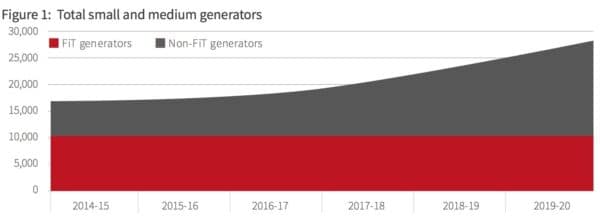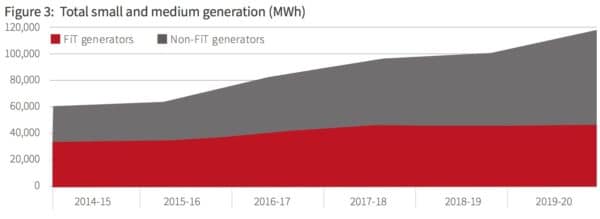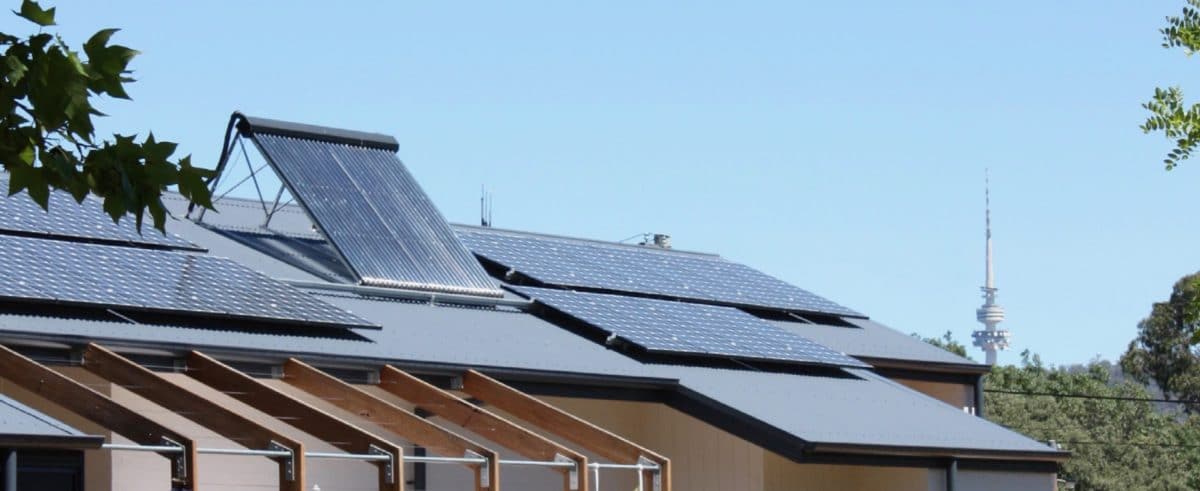According to the Australian Capital Territory’s (ACT) annual Feed-in Tariff report, Canberra saw an 18.8 percent increase in clean solar energy generation in 2019-20. The increase is attributed to the now more than 28,000 solar generators in the nation’s capital.
“Canberrans are playing a significant part in generating the ACT’s 100% renewable electricity supply,” said Minister for Water, Energy and Emissions Reduction, Shane Rattenbury. “Canberrans recognise the value solar has to our clean, green and affordable energy future.”
According to the same report, the ACT Government’s small and medium FiT scheme (which closed to new applicants in 2011) supported 10,153 rooftop solar generators last year, generating 47,296 MWh of electricity. This represents a 1.6% increase in uptake through the program from the previous year while the cost of the scheme itself actually fell 1.46% to just 83 cents for the average punter.

“The FiT scheme, which was designed as an incentive to boost solar uptake when the technology was new and more expensive, has made an important contribution to renewable electricity generation in the ACT,” continued Rattenbury.
The total installed capacity from solar generators by the end of the last financial year in Canberra was 135 MW. Meaning that not subsidised uptake of solar is soaring too. The continued uptake of solar by Canberrans is seen by the ACT Government as playing a key role in maintaining its 100% renewable electricity supply.

This year the ACT Government is also rolling out its Sustainable Household Loan Scheme, an effort to help Canberrans easily negotiate the up-front barrier to rooftop solar. The scheme offers interest-free loans of up to $15,000 for households and not-for-profit community organisations to help with the upfront cost of investing in rooftop solar panels, household battery storage, as well as zero emission vehicles and other energy efficient appliances.
“Installing solar at your home or business can bring your energy costs down while contributing to our 100% renewable electricity supply,” said Rattenbury, “so I encourage Canberrans to look how they can contribute to Canberra’s clean energy future.”
According to the Clean Energy Regulator’s (CER) November 2020 Carbon Markets Report, rooftop solar continued to surge in 2020 despite the Covid-19 pandemic. Demand for rooftop solar is expected to remain strong in the future too, according to the CER. It commissioned modelling that suggests an average of 3.2 GW could be added each year for the next four years. “If realised, this investment would effectively double rooftop solar capacity, to 26 GW, by the end of 2024.” This, Parker says, would “dramatically change” the energy landscape in Australia, with small and mid-scale sectors set to outstrip the capacity of the large-scale sector.
This content is protected by copyright and may not be reused. If you want to cooperate with us and would like to reuse some of our content, please contact: editors@pv-magazine.com.









2 comments
By submitting this form you agree to pv magazine using your data for the purposes of publishing your comment.
Your personal data will only be disclosed or otherwise transmitted to third parties for the purposes of spam filtering or if this is necessary for technical maintenance of the website. Any other transfer to third parties will not take place unless this is justified on the basis of applicable data protection regulations or if pv magazine is legally obliged to do so.
You may revoke this consent at any time with effect for the future, in which case your personal data will be deleted immediately. Otherwise, your data will be deleted if pv magazine has processed your request or the purpose of data storage is fulfilled.
Further information on data privacy can be found in our Data Protection Policy.